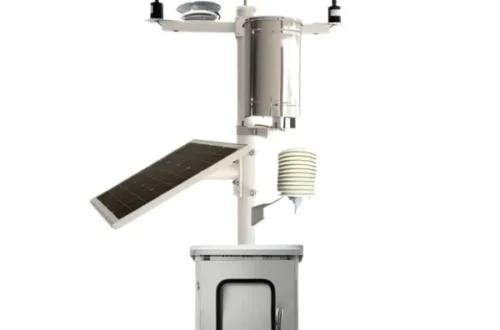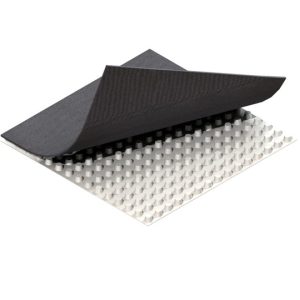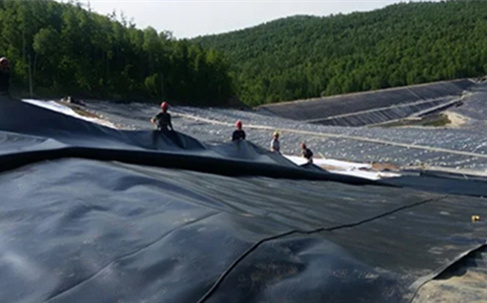-
GRL Busbar: Key Applications and Benefits in Modern Electrical Systems
GRL Busbar: Key Applications and Benefits in Modern Electrical Systems Modern electrical systems demand efficiency, reliability, and compact design. The grl busbar stands out as a critical component, replacing traditional wiring with a robust conductive bar. This innovation supports higher current capacity and reduces energy loss, making it indispensable across industries. Core Advantages of GRL Busbar Systems GRL busbars offer superior electrical distribution, minimizing voltage drop and enhancing safety. Their modular design allows easy installation and scalability, ideal for data centers and industrial plants. With excellent heat dissipation, they ensure stable performance under high loads. Frequently Asked Questions What industries benefit most from GRL busbars? Renewable energy, manufacturing, and telecommunications…
-
GRL Group: Unlocking the Secrets to Success in Modern Business
GRL Group: Unlocking the Secrets to Success in Modern Business In today’s fast-paced business environment, achieving sustainable growth requires innovative strategies and expert guidance. The grl group stands out as a leader in providing tailored solutions that help companies navigate challenges and seize opportunities. This article explores the core principles behind GRL Group’s approach and how they can transform your business operations. Innovative Business Strategies GRL Group specializes in developing cutting-edge strategies that drive efficiency and profitability. By leveraging data analytics and market insights, they help businesses optimize their processes and enhance customer engagement. Their proven methodologies ensure that companies stay ahead of industry trends and competitors. Comprehensive Service Offerings…
-
Essential Weather Measuring Instruments: A Comprehensive Guide
# Essential Weather Measuring Instruments: A Comprehensive Guide Weather monitoring is crucial for various industries, from agriculture to aviation. Understanding the tools that measure atmospheric conditions can enhance safety and decision-making. This guide explores key **weather measuring instruments** and their applications. ## **Common Meteorological Tools** Meteorologists rely on precise devices to collect data. These instruments help predict weather patterns and monitor environmental changes. ### **Thermometers and Barometers** Thermometers measure temperature, while barometers track atmospheric pressure. Digital versions now offer real-time data logging for accuracy. ### **Anemometers and Hygrometers** Anemometers gauge wind speed and direction. Hygrometers assess humidity levels, vital for climate studies. ## **Advanced Monitoring Systems** Modern technology integrates sensors…
-
Atmospheric Pressure Definition: Understanding the Force of Air Around Us
**Understanding Atmospheric Pressure** Atmospheric pressure is the force exerted by the weight of air above us. It affects weather patterns, human health, and even daily activities like cooking or flying. To grasp the full atmospheric pressure definition, it’s essential to explore its causes and effects. **Key Factors Influencing Air Pressure** Altitude, temperature, and humidity are primary factors. Higher altitudes have lower pressure, while warm air reduces density and pressure. This variability explains why weather forecasts rely on pressure measurements. **How Atmospheric Pressure Impacts Daily Life** From predicting storms to enabling aviation, atmospheric pressure is crucial. Low pressure often signals rain, whereas high pressure indicates clear skies. It also affects how…
-
What is Atmospheric Pressure? Definition, Causes, and Effects
What is Atmospheric Pressure? Atmospheric pressure, also known as air pressure, is the force exerted by the weight of air in the Earth’s atmosphere. It plays a crucial role in weather patterns, human health, and various industrial applications. Definition and Basic Concepts To define atmospheric pressure, it is the pressure within the atmosphere of Earth, typically measured with a barometer. Standard atmospheric pressure at sea level is 1013.25 millibars or 29.92 inches of mercury. Causes of Atmospheric Pressure Gravity is the primary cause, pulling air molecules toward the Earth’s surface and creating pressure. Temperature and altitude variations also significantly influence pressure levels. Effects on Weather and Health Changes in atmospheric…
-
What Is a GRL Fuse? A Comprehensive Guide
What Is a GRL Fuse? A grl fuse is a specialized electrical safety component designed to protect circuits from overcurrent and short circuits. These fuses are engineered for high-performance applications where reliability and precision are critical. By interrupting excessive current flow, they prevent damage to sensitive equipment and reduce fire hazards. Key Features of GRL Fuses High interrupting rating for industrial use Fast-acting response to overcurrent Compact design with durable materials How GRL Fuses Work GRL fuses operate on a simple principle: when current exceeds the rated limit, a fusible element inside melts, breaking the circuit. This rapid disconnection safeguards connected devices and wiring. Their design ensures minimal voltage drop…
-
GRL: The Ultimate Guide to Understanding and Implementing GRL Strategies
GRL: The Ultimate Guide to Understanding and Implementing GRL Strategies In today’s competitive digital landscape, mastering GRL (Global Resource Leveraging) strategies has become essential for sustainable business growth. This comprehensive guide explores how organizations can effectively implement GRL frameworks to optimize their global operations and maximize resource utilization. Core Components of GRL Framework The GRL methodology comprises three fundamental elements that work synergistically to drive organizational success. Understanding these components is crucial for effective implementation. Resource Mapping and Allocation Strategic resource mapping forms the foundation of successful GRL implementation. Organizations must identify available resources across global operations and develop systematic allocation protocols that align with business objectives. Cross-Border Collaboration Systems…
-
GRL: The Ultimate Guide to Unlocking Its Potential
GRL: The Ultimate Guide to Unlocking Its Potential In today’s fast-paced technological landscape, understanding grl is essential for professionals and enthusiasts alike. This comprehensive guide explores how GRL can transform your approach to innovation and efficiency. Core Features of GRL Technology GRL offers a suite of advanced tools designed to streamline workflows and boost productivity. Its key functionalities include real-time data analysis, automated reporting, and seamless integration with existing systems. These features empower users to make data-driven decisions quickly. Real-Time Analytics and Performance Metrics With GRL’s cutting-edge analytics, you can monitor performance metrics instantly. This capability helps identify bottlenecks and optimize processes for maximum output, making it a valuable asset…
-
Radiated vs. Irradiated: Key Differences and Definitions
Radiated vs. Irradiated: Key Differences and Definitions When discussing energy transfer, many confuse the terms radiated and irradiated. Though related, they describe distinct concepts in physics and engineering. Understanding their differences clarifies their applications across industries. What Does Radiated Mean? Radiation refers to energy emitted as waves or particles from a source. Common examples include heat from the sun or radio waves from antennas. Types of Radiation Radiation can be electromagnetic (like light) or particulate (such as alpha particles). Each type has unique properties and uses. What Does Irradiated Mean? Irradiation describes the process where an object receives radiation. It focuses on exposure rather than emission. Applications of Irradiation Irradiation…
-
The Hidden Downsides of Automatic Weather Stations: What You Need to Know
The Hidden Downsides of Automatic Weather Stations: What You Need to Know Automatic weather stations (AWS) have revolutionized meteorological data collection, but they come with significant drawbacks that are often overlooked. Understanding these limitations is crucial for accurate weather interpretation and decision-making. Key Limitations in Data Accuracy While AWS provide continuous monitoring, they suffer from calibration drift and sensor degradation over time. Temperature sensors may show errors due to radiation shielding issues, while rainfall gauges often undercatch during high-wind events. These inaccuracies compound when making long-term climate assessments. Maintenance Challenges Regular maintenance is essential yet frequently neglected. Sensors require cleaning, calibration, and protection from environmental damage. Without proper upkeep, data…




















